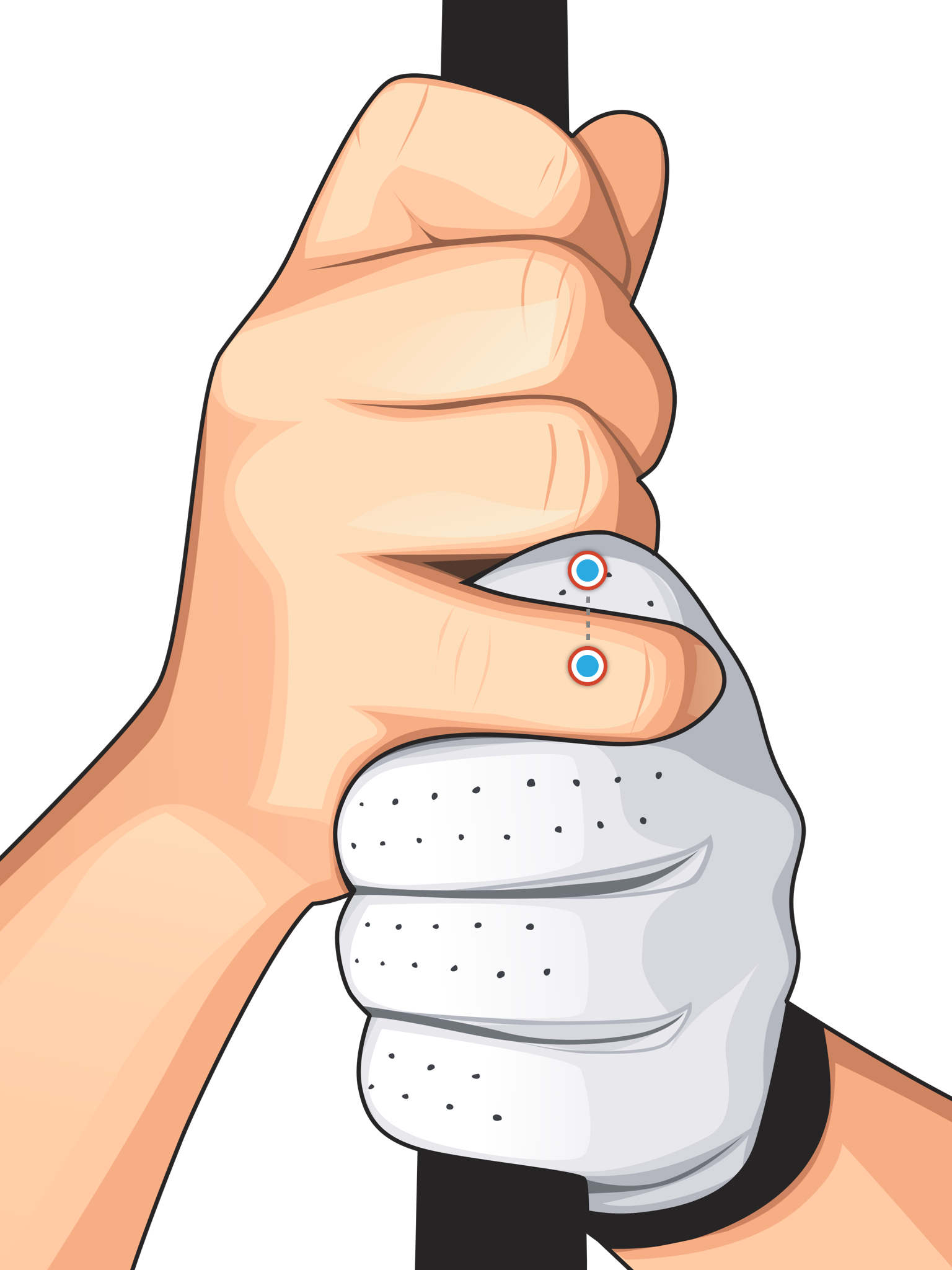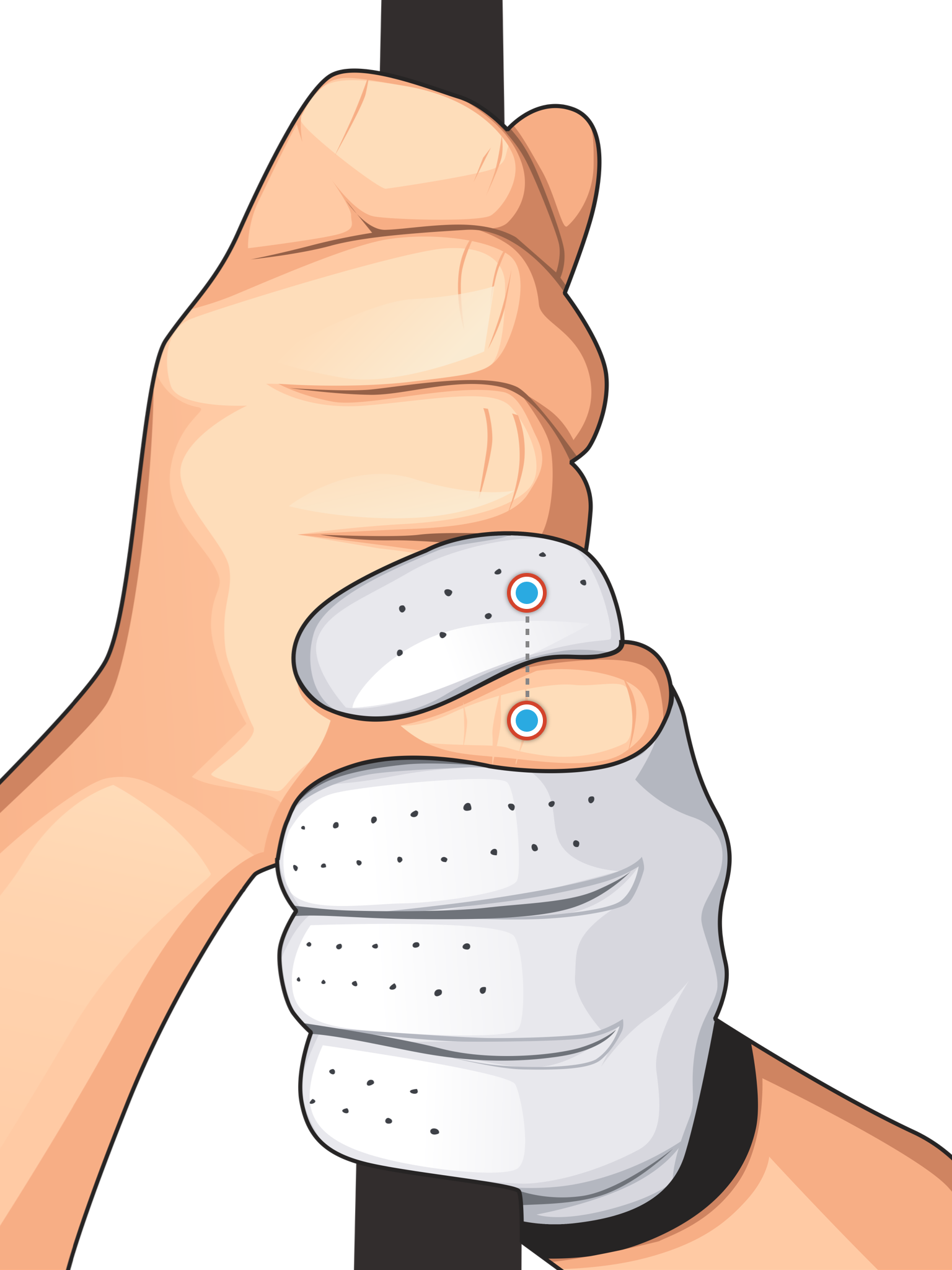
Three Grip Types
The three most common grips are the 10-Finger, Overlap, and Interlock. All can be done well, and all can have issues.
If we were to look at all PGA and LPGA Tour players, we would see a wide array of grips.
The reason for that is that the purpose of the grip is what’s important. So, the way it looks from one player to the next changes to accommodate their patterns.
The role of the grip in the full swing:
Connect hands to the club (to hold on to it)
Allows the wrists to hinge and unhinge
CONTROL THE CLUB FACE!
10-Finger Grip also known as the Baseball Grip.
An excellent grip for beginners to get started. Make sure that the handle is in the fingers of the lead hand. It should be known as “2-Thumbs and 8-Fingers,” but that’s not as catchy!
Overlap Grip also known as the Vardon Grip.
I most often teach this and the 10-finger grip. Now, that’s not to say that I’ll change someone to one of these two grips just to change it or look a certain way.
Interlock Grip.
This is a very common grip, and many of the best players use this grip. However, I see the most amount of grip issues with recreational golfers that use this grip. Once again, I don’t move people out of this grip if it is not necessary. But it often needs adjusting!
Instead of calling the grip a “fundamental,” I say that there are grip “traits” and grip-to-swing “match-ups” to look for. The reason for that is that the purpose of the grip is what’s important. So, the way it looks from one player to the next changes to accommodate their patterns.
Key Checkpoints
-

10-Finger Grip
1. Lead hand in fingers
2. Trail hand in fingers
3. All eight fingers connected -

Overlap Grip
1. Lead hand in fingers
2. Trail hand in fingers
3. Trail hand pinky finger overlaps lead hand index finger. -

Interlock Grip
1. Lead hand in fingers
2. Trail hand in fingers
3. Trail hand pinky finger interlocks with lead hand index finger.
In my day-to-day teaching, I only change the grip when it is necessary. Grip changes are always uncomfortable at first and can revert quickly to where they were previously comfortable.
When is it necessary, you might ask?
When there’s a hinge issue that is a result of grip location in the lead hand. Or, when there is a club face issue that can’t be solved by wrist angle changes.
All Grip Sections
Quick links
Member Home | The Grip | Putting Skill Drills | Chipping Skill Drills | Chipping Essentials
Next Up:















